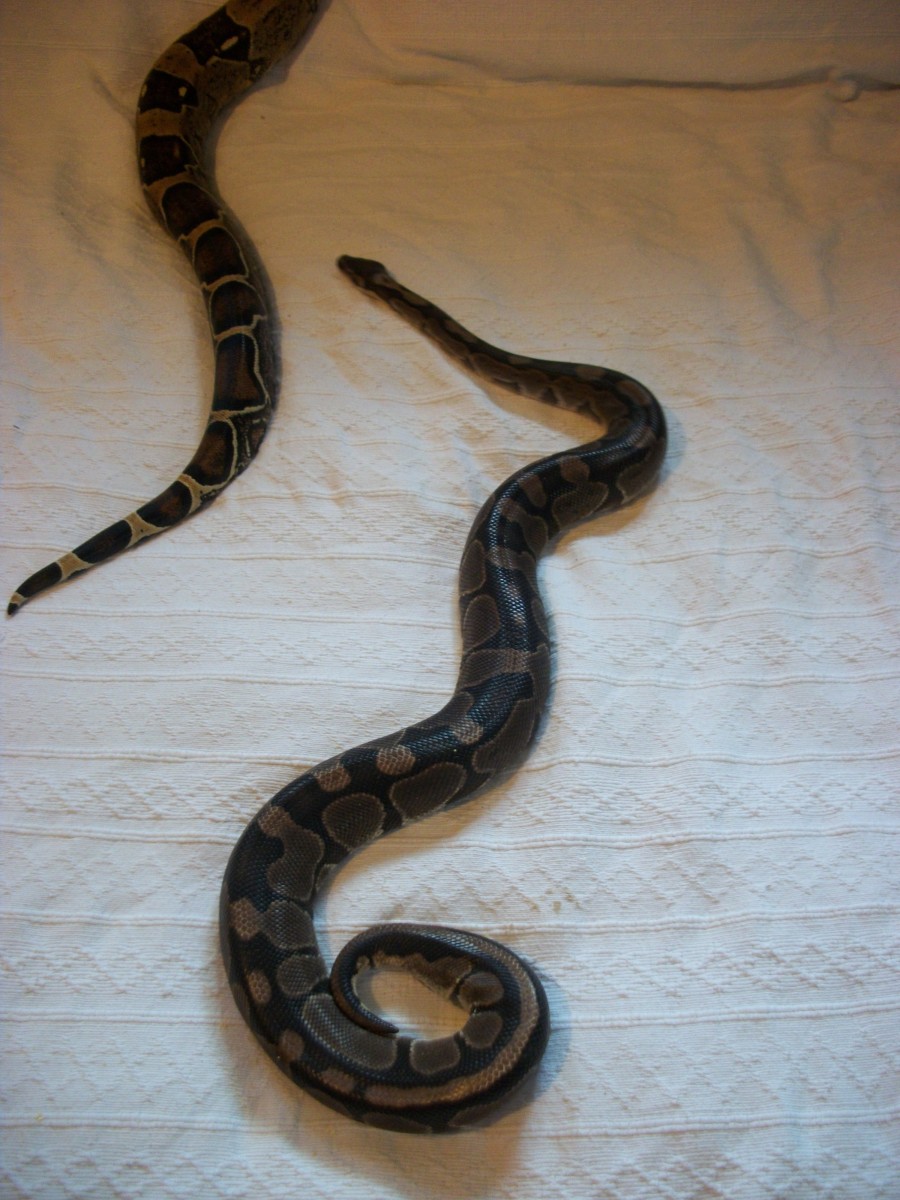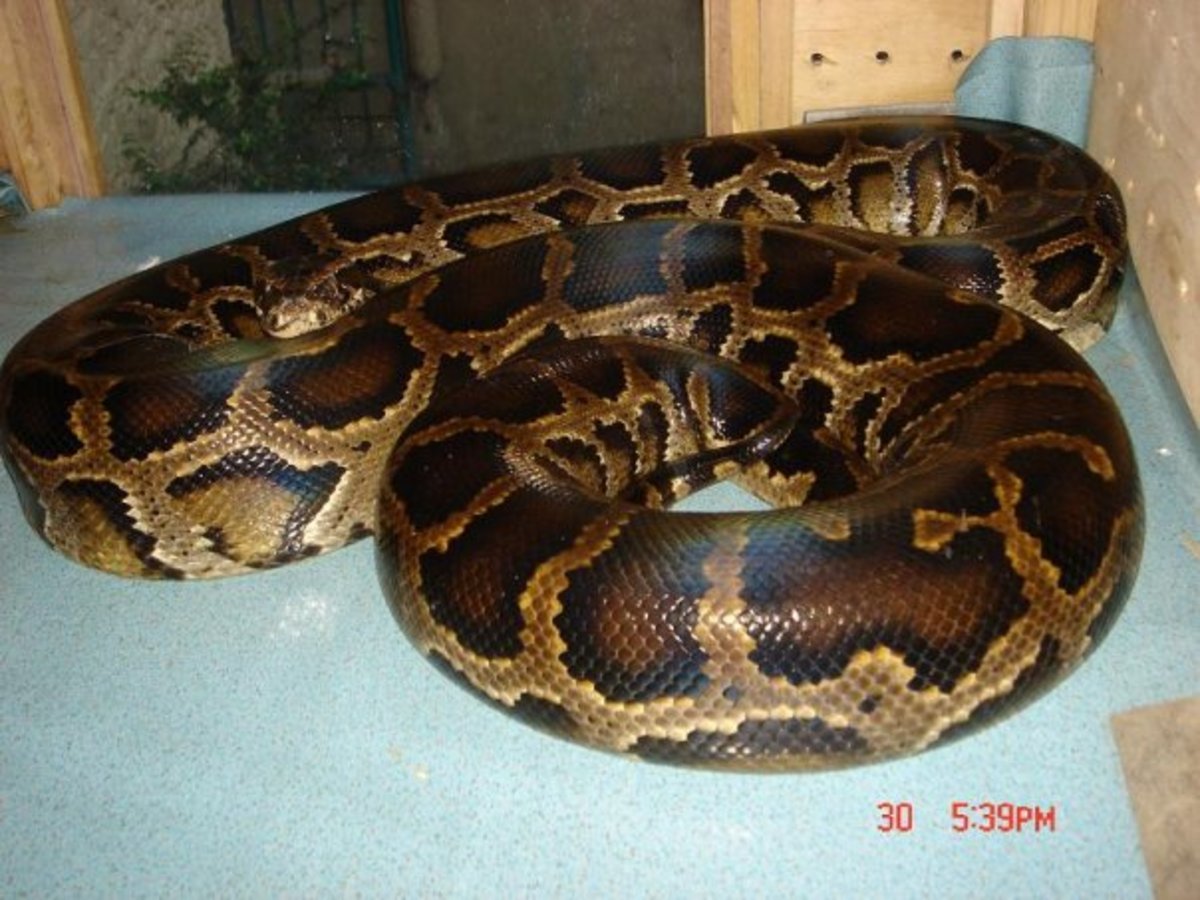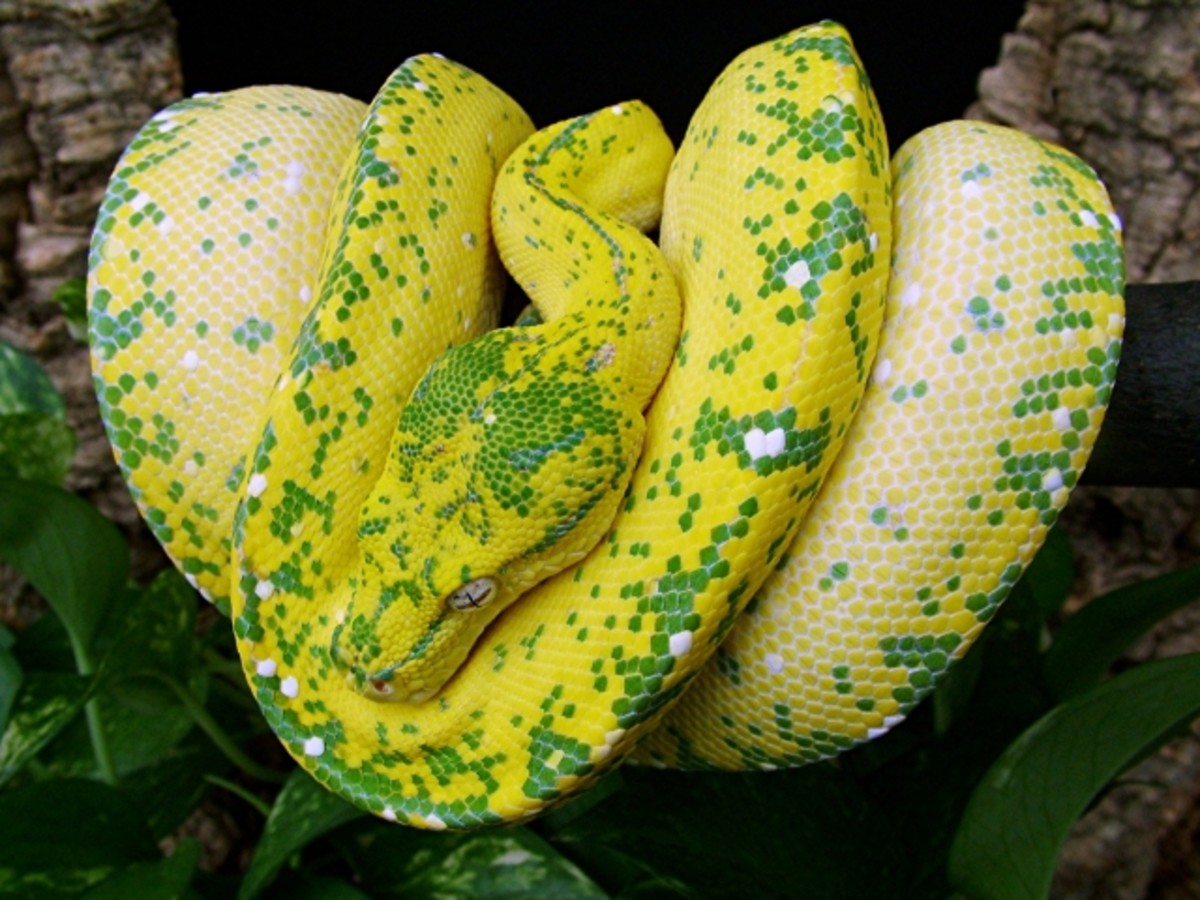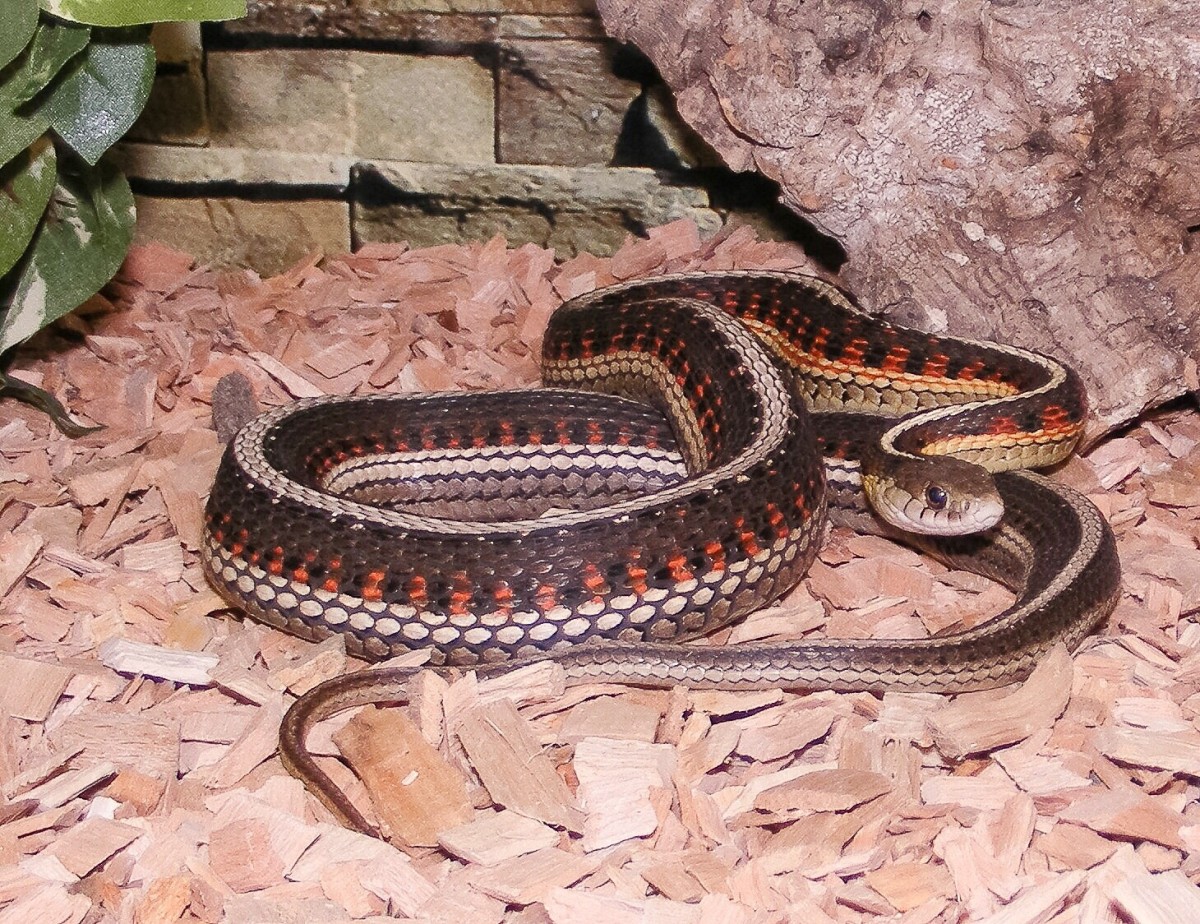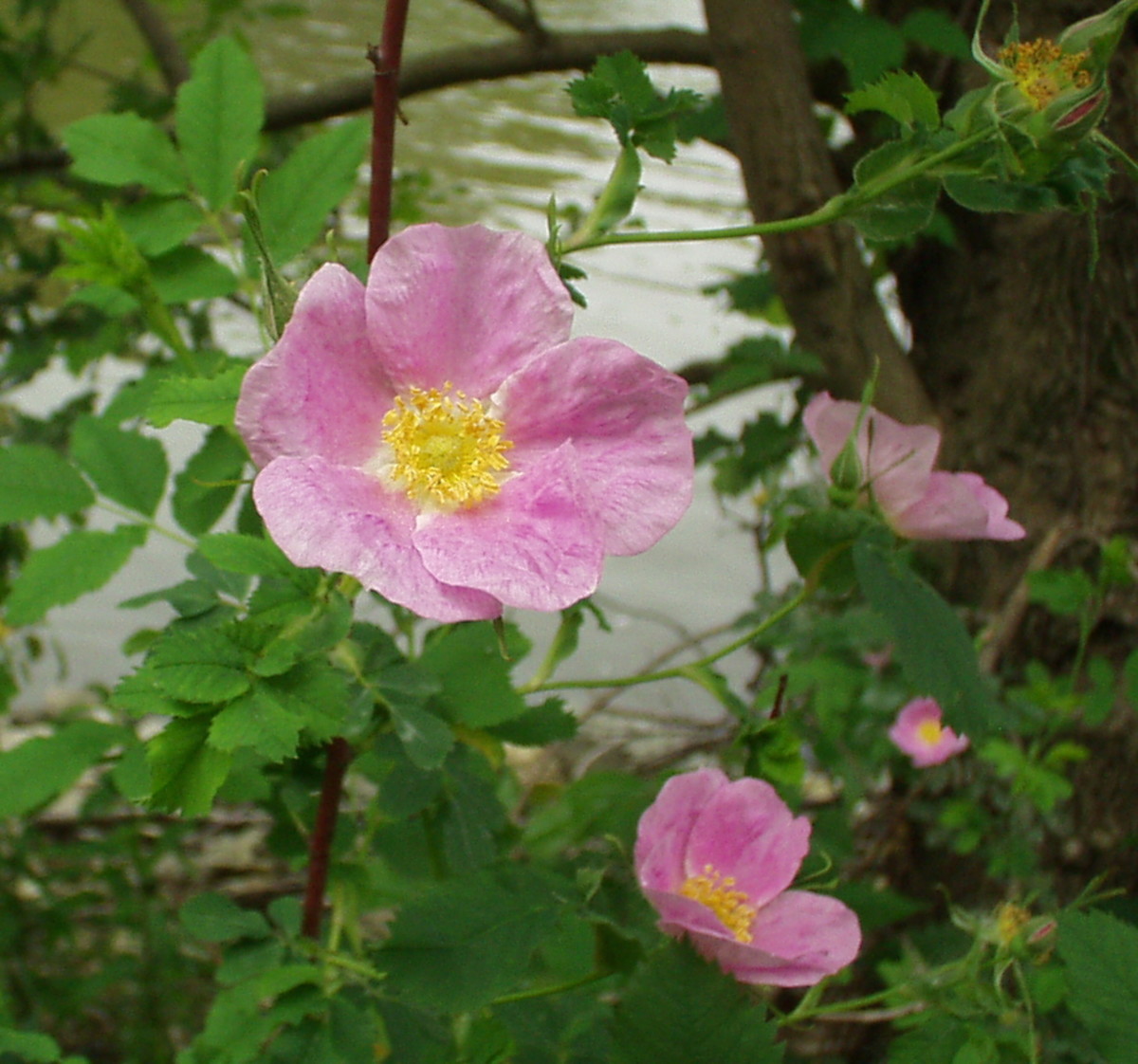The Ball Python: Beautiful Reptile
©copyright ALL RIGHTS RESERVED 2012
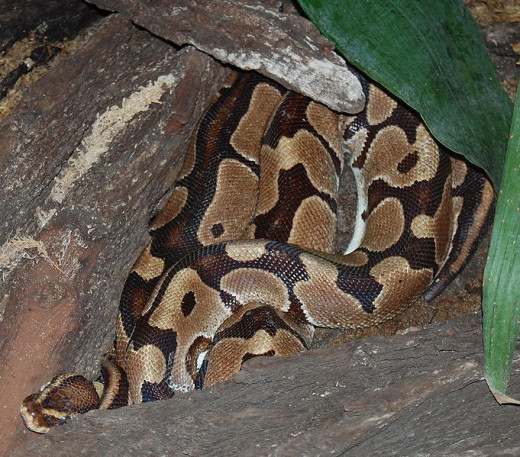
Ball Python
The Ball Python is indigenous to Africa. It's known as the "Ball" python for it's tendency to curl into a ball when it senses danger. Although many people fear snakes, this nonvenomous creature makes a wonderful pet. They are easy to care for, require very little maintenance and they never bark at strangers, they won't destroy the carpet and when they shed, it's usually in one piece that you can remove from their habitat!

Ball Python Habitat
Adolescent pythons can be kept in a ten gallon tank. Since pythons can grow to be 4' - 4.5' long, a fifty gallon tank is suggested for an adult python.
On the bottom of the tank you should keep shredded aspen, cypress mulch or reptile bark. Don't use cedar! It's toxic to all snakes.
MOST IMPORTANT: your python habitat must have a LOCKING LID.
Professional breeders DO NOT suggest tanks as python habitats. Breeders use very sophisticated systems that have smaller enclosed boxes. While they are very practical for breeding purposes they are impractical for keeping a single python.
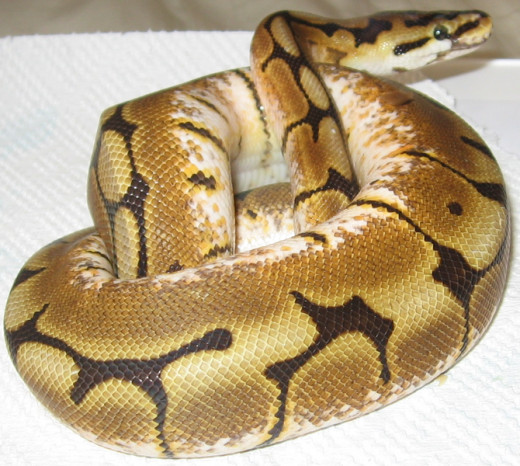
Ball Python Heat & Humidity
Inside of your python's habitat there should be a dry heat controlled sub-straight at the bottom of one end (not a heat rock) and at the same end you should provide a heat lamp from above. It's not suggested to provide a heat light as pythons are not accustomed to light and do not require light. There are many different options available for heating your python's habitat. There are colored bulbs as well as bulbs that emit only heat and no light at all. Make sure the temperature inside the tank stays between 80-90 degrees at all times. If you keep your heat mechanisms at one end of the tank, your python will regulate its own body temperature by moving around within the habitat. Adhere a thermometer to the outside of your tank just above the heated sub-straight so that you can accurately control the temperature.
It's important that you provide enough moisture by keeping the humidity in the tank between 60%-80%. If proper moisture is controlled, your python will shed in proper cycles, be less likely to become a finicky eater and be healthier overall. Some habitats will require you to manually spray your python with water a few times a week or up to 2-3 times a day - depending on the type of habitat you have chosen.
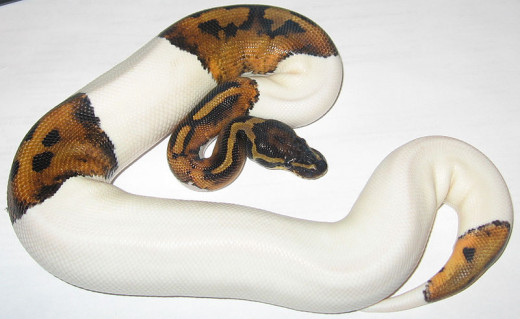
Ball Python Feeding
Ball Pythons prefer a diet of small mammals. For captive born pythons, depending on the original method of feeding, their prey could be live or dead. It's typical to feed ball pythons captive born feeder mice or rats. The purpose of captive born feeder prey is to prevent the python from contracting bacteria and disease.
Occasionally pythons will fast, more typically in winter months or if they are not comfortable in their habitat. Providing a warm, dark place for your python to hide may help them regain their interest in eating. Another method often used is to place your python in a smaller habitat, which can also be calming.
Pythons should always have a fresh bowl of water in their habitat. Don't allow the water to dry out or become dirty. Keep it clean.
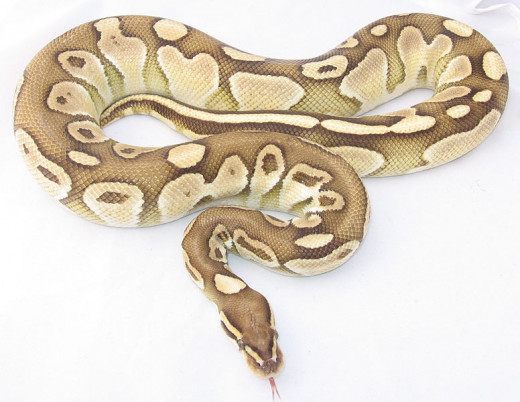
Ball Pythons as Pets
You can't train a python to fetch. They'll never sleep at the foot of your bed. Why would you want a ball python in your home? They are amazing creatures to watch and handle.
The ball python is a constrictor, not a biter! Pythons bred in captivity rarely bite. In fact, they are quite docile animals and can be handled quite often! Many people believe that their pythons know them. It is never recommended that a python from the wild be brought into captivity.
Ball Python Morphs
There is a whole new breed of ball pythons that is making a grand entrance into the scientific classification of Python regius. MORPHS! These creatures are genetically manufactured to look like they've exploded from tropical fruits, slithered through fine metals, been glazed with ice cream flavors and been struck by lightening. They are truly beautiful creatures.
There are base morphs and designer morphs. One of the leading ball python genetic designers is Mike Wilbanks. Every time I visit a website or read an article about genetic alterations or morphing, the same name comes up - Mr. Wilbanks and Constrictors Unlimited. Upon visiting his website and watching You Tube videos, the Constrictors Unlimited team has undoubtedly the best collection of morphed ball pythons. While there are many excellent snake breeders, what makes Constrictors Unlimited stand out is that they specialize in an ELITE level of ball pythons. They took morphing to a whole new level.
Mike Wilbanks
Tour Constrictors Unlimited
The video is a quick look into the world of Constrictors Unlimited - courtesy of You Tube via Constrictors Unlimited.
Tour the facility, see the rack storage, hatching ball pythons, feeding pythons, morphs and more!
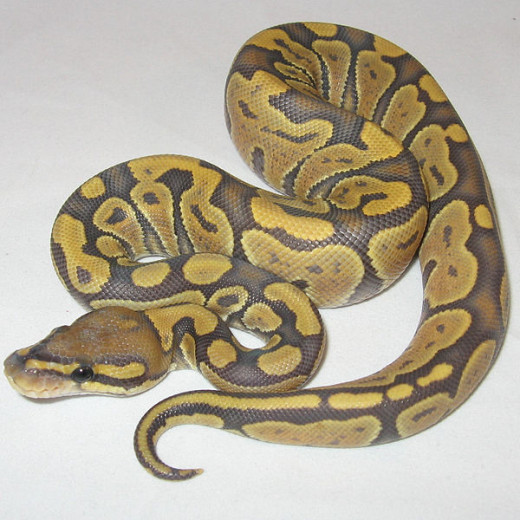
Constrictors Unlimited
- Pythonregius.com - Constrictors Unlimited- Mike Wilbanks - Home
Specializing in the captive propagation of the designer morphs of python regius, ball pythons, royal pythons. We are one of the largest producers in the world of ball pythons. We only work with python regius commonly called ball pythons. Focusing on
World of Ball Pythons
©copyright ALL RIGHTS RESERVED 2012







